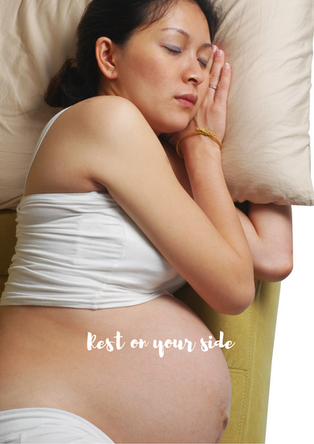
I entered into my last trimester in agony, sleepless nights and frequent toilet breaks. I suddenly thought to myself “how would I know if I am ready to deliver?”. I searched and read over and over different articles of signs of labour, and tried to remember them. But with a pregnant brain, I had limited memory capacity. I hope this is one of the articles you will find it easier to remember!
With my firstborn, I had frequent contractions that were 8/10 at 3am! Then I decided to shower and wake my hubby up to get ourselves admitted. To be honest, moving around during contractions was much more bearable than lying down.
With my second born, I had to be induced into labour because my amniotic fluids level were low. WOW! Those contractions after the effect of induction starting kicking in made me kneel in bed. I think I gave the nurse a scare when she came into my room to check on me. Paced, deep breathing was my saviour to manage my pain before my epidural kicked in. HUSBANDS, LISTEN UP! There are some things you can do to support your wife too! Read on to find out!
Also, through conversations with young women around me, I learnt that it was essential to keep an open mind about your birth plans, because your baby may have his/her own plans =D
How do I know I am going into labour?
The “show”
You might notice a mucoid discharge (like thick egg white from a very fresh egg) which may or may not be bloody expelled from your vagina. This happens as your cervix starts to thin and widen, the mucus plug that sealed your cervix shut keeping harmful germs away from your baby is expelled. This is commonly known as “the show”.
Contractions
Another sign that you are going into labour is when you feel regular contractions. Some feel this low in their pelvis like an intense menstrual cramp, others a dull backache. Contractions are an indication that the uterus is slowly gathering momentum to propel your baby into this world.
“Water bag breaking”
As labour progresses, the fluid surrounding and protecting your baby might leak as your membranes rupture. This is commonly known as the “water bag breaking”. It might leak in trickles as you change positions or flow down your leg depending on the position of your baby when this happens. A thick pad is useful to manage this as you travel to the hospital.
When should I start making my way to the hospital?
Bleeding/leaking amniotic fluid
Suppose you experience any bleeding or leaking of amniotic fluid. In that case, you should call your Doctor and proceed to the hospital without delay. Saving the numbers to your Doctor’s clinic and the labour ward now is an excellent way to avoid drama. If you leak and it does not smell like urine, it is likely amniotic fluid.
Regular contractions for the past hour
When you experience regular contractions about 15 minutes apart for an hour, you can start to proceed to the hospital. This is when you are likely to be moving into the phase of labour, where contractions become more intense.
Unmanageable pain
Suppose you are experiencing pain that you are not able to manage. You should proceed to the hospital, even if you without any of the symptoms mentioned above for a check.
What can my partner and I do to cope with labour discomfort?
Conserve your energy
Creating a soothing environment with your favourite music, scent, and comfortable clothing can make all the difference when managing contractions as your body naturally labours.
Contractions last from 30-90 seconds with an interval of 1-20minutes in between. They start shortly with a more extended rest in between. It progressively lasts longer with shorter breaks as it gets closer to the baby’s arrival. Distract yourself and stay calm during each contraction. Rest once the contraction subsides help you to stay comfortable and conserve energy for the pushing stage when your cervix is fully dilated.
Breathing and movement technique
When you can feel the contraction starts, take a relaxed breath out with pursed lips, breathe in slowly from your nose when your body is ready. Continue taking slow deep breaths like this until the contraction subsides.
Tilting your pelvis from front to back or drawing slow circles with your pelvis is also helpful to manage contractions. You can do these by dancing slowly with your partner behind you, he can rub your lower abdomen or wherever you feel the contraction as you move. When you get tired, you can move your pelvis while seated on a chair, your partner can sit behind you and help to rub your lower abdomen or back or shoulders to keep you comfortable.
Adopting upright or forward-leaning postures helps your body to labour faster naturally. If you go into labour at night, it is better to rest on your side or sit in a chair and lean forward on a table to conserve energy. If you go into labour in the day, consider staying active, going for short walks for a smoother labour process.
Hence to summarise for you, here are 3 things you need to do:
Identify the sign of labour
Decide if you need to head to the hospital
Practice the above techniques in the preparation of labour!
Trust your body to do what it is made to do. All the best!







